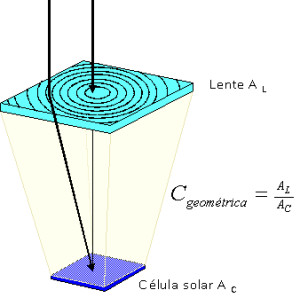Maloche's post from a few years ago, which spoke of 40% future yield for the PV, is being achieved:
36% net taking into account the loss of the system, ... but C-PV therefore + 500% of photon collection !!! (And as I understand it.)
For me, it's: 46% gross yield pending a possible correction in case of misinterpretation (but I think we are there)
This is not a dream, it is happening before our eyes (I did not expect to see it during my lifetime ...)
Capt_Maloche wrote:Obamot wrote: .... simply more profitable with the new ultra-high efficiency photovoltaic with 46% maximum efficiency ...! >>> and even 4x better in concentration (C-PV, well, that should interest Maloche ...)
46% ?? where? where??
Ah, but it is not done, it is about the association of our CEA of Chambery and Grenoble with a German laboratory to create a "Virtual Lab" and to save time, as we did with the weapon nuclear
there is heavy under there
It is indeed the CEA, but I do not see why you say that it is not made Maloche? They have reached this threshold, but have steadily gained momentum in recent years. There it is "the last vintage". Where did I go wrong?
I publish another link:
http://www.sciencesetavenir.fr/high-tec ... laire.html
Source: sciencesetavenir.fr, Olivier Lascar Posted on 05-12-2014 at 09h00 wrote:46% of light converted into electricity, world record for a solar cell
This extreme solar collector was designed by the French and the Germans. It could be used in gigantic "solar farms" in regions enjoying a lot of sunshine.
NOT BETTER. Europe, world champion. The old continent confirms its first place in an enviable field, that of the conversion of light into electricity. The threshold was 44,7%, it has just risen to 46%. This rate was reached by a solar cell developed jointly by CEA-Leti, the French company Soitec (originally an emanation, precisely, from CEA) and the Fraunhofer Institute for Solar Energy Systems (ISE) in Germany .
Semiconductors with better performance than silicon
Unlike these photovoltaic panels that cover the roofs of green houses, the solar cell of all records is not made of silicon. "We use other semiconductors, so-called III-V materials", comments Thomas Signamarcheix, head of the advanced substrates lab at CEA-Leti. Understand chemical elements classified in the 3rd and 5th columns of the Mendeleev periodic table. Their advantage:"They have a better yield than silicon", continues the French researcher.
"Junctions"
Thus, the solar collector having reached the conversion rate of 46% consists of a stack of several layers - or "junctions"- each of which reacts to light in a certain wavelength."Imagine green, red and blue Lego bricks. Our junctions are the same, each converting into electricity which green light, which red, which blue", continues Thomas Signamarcheix.
"Not a 5 legged sheep"
One question remains: will this record of 46% remain confined to the four walls of the laboratory? "No. Because the solar cell that produced this conversion rate is by no means a 5-legged sheep. On the contrary, it was manufactured using a technology - consisting of gluing the layers one on the other by molecular adhesion - perfectly mastered by the industry for 20 years, and in particular by the company Soitec, even if it was in the context of other applications".
"Solar farms"
The III-V semiconductor device must therefore be able to be used for example in "solar farms", these large solar power stations installed in regions which benefit from high direct sunlight. But the integration of these devices into concentrating photovoltaic (CPV) systems will nevertheless be accompanied by a loss in total efficiency, "hence the importance of quickly implementing these devices in pilot installations which will be the only way to validate this gain"specifies Thomas Signamarcheix.
Because the 46% cells will be encapsulated there, among other components, in concentrating photovoltaic systems (CPV) - for example lenses that concentrate sunlight, 508 times! "And there are inevitably losses at every level of CPV systems. Thus the modules consisting of the assembly of the devices with the lenses presently present at best an efficiency of 36,7% ", explains the CEA-Leti researcher. "Nevertheless, each electron gained by the conversion of the device will always represent a gain for these clean energy production systems.". Already a big step forward compared to 25% (at best) of good old silicon solar collectors.
So I don't know if you read like me, but yes it's already done, you were just five years ahead! And they are more than ten years ahead of the forecasts. It is surely due to the decisions to exit nuclear power in certain countries, there are things like that FINALLY coming out of the cupboards ...
Let us not forget that Solar Impulse II achieved its feat of crossing the Atlantic with an average yield of 12%! With such panels, they would probably have benefited from double that.
As long as we know that it is possible, and more than the theory, it only remains to wait for panels with similar yields to be made with common semiconductors and available in abundance!
And why not 3 layers of silicon (?) Sony filed a patent not that long ago (admittedly for CMOS photo sensors, but that is to say that it is feasible in the substrate and not only by sticking 3 layers together), it's in the pipes, I think ...
RTDC.









